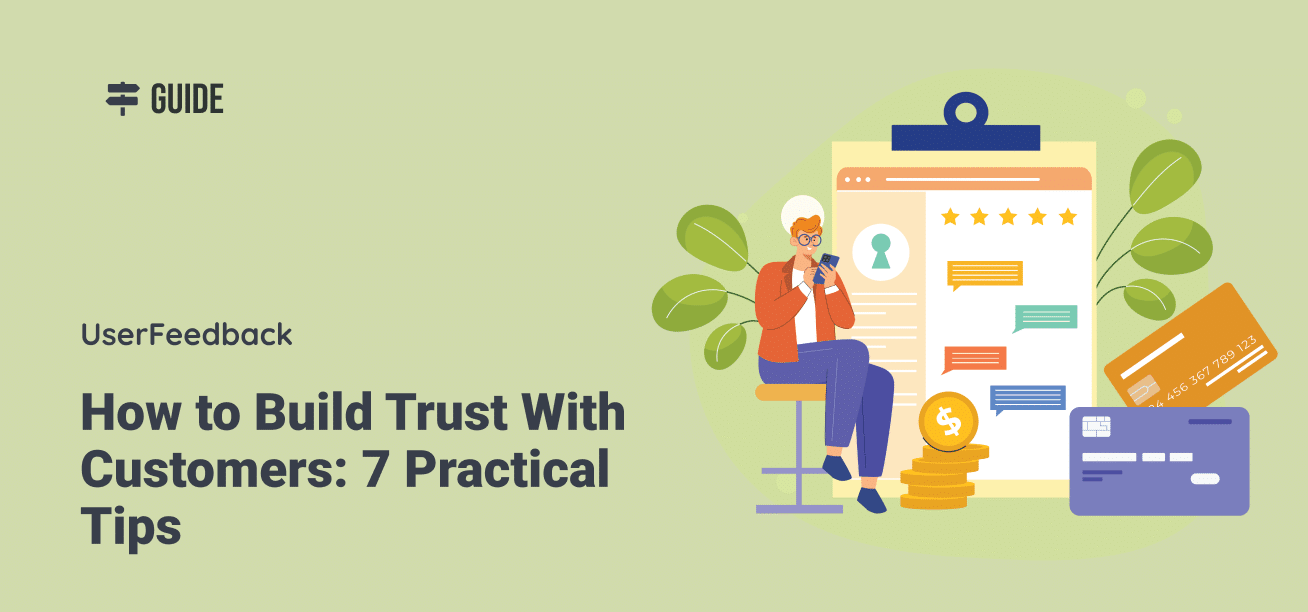Ever notice how some brands seem to have customers who would walk through fire for them? The secret isn’t magic—it’s trust. If you want to grow a successful business, you need to learn how to build trust with customers. When customers trust your brand, they’re more likely to become loyal advocates who return again and again.
I’ve spent years analyzing customer behavior and implementing trust-building strategies, and I’ve seen firsthand how powerful customer trust can be for business growth.
In this article, I’ll share proven methods to build strong customer relationships based on trust. I’ll also explain why earning customer confidence is crucial for your bottom line.
Table of Contents:
- Why Is Customer Trust Important?
- How to Build Trust With Customers: 7 Practical Tips
- Best Practices for Building Customer Trust
- How to Rebuild Trust After a Mistake
- How to Measure Customer Trust
- FAQ About Building Customer Trust
Why Is Customer Trust Important?
Customer trust directly impacts your business’s success in several significant ways. Let’s take a look at some powerful statistics:
- Higher Retention Rates: This is really important because, according to research from Bain & Company, increasing customer retention by just 5% can boost profits by 25% to 95%.
- Increased Word-of-Mouth Marketing: A study by Nielsen found that 83% of consumers trust recommendations from friends and family more than any other form of advertising.
- Greater Purchasing Power: Customers who trust your brand are likely to spend more on your products or services. According to PwC, 42% of consumers would pay more for a friendly, welcoming experience.
- Brand Advocacy: Trusted brands gain natural advocates who promote their products and services to others, expanding their customer base organically.
These numbers speak for themselves and prove my point – customer trust is super important if you want to be successful! When customers trust your business, they become more than just buyers—they transform into loyal advocates who help your company grow through positive word-of-mouth and repeat purchases.
Now, let’s take a look at the 7 most effective and powerful tactics you can use to build trust with your customers.
How to Build Trust With Customers: 7 Practical Tips

Here are seven proven strategies to build and maintain customer trust:
1. Create High-Quality Products and Services
Delivering excellent products or services is the beginning of building customer trust. According to the American Customer Satisfaction Index, product and service quality is the most important factor in customer satisfaction.
How to implement this strategy:
- Conduct thorough product testing before launch
- Use high-quality materials and components
- Regularly update and improve your offerings based on customer feedback
- Set clear expectations about what your product or service can deliver
Remember that customers form their strongest opinions about your brand based on the quality of what you sell. No amount of marketing can overcome a genuinely disappointing product experience.
The best way to avoid mistakes and improve your products is by collecting customer feedback. This lets you learn directly from your customers about what’s working well and where you need to improve.
If you’re on WordPress, I highly recommend UserFeedback.
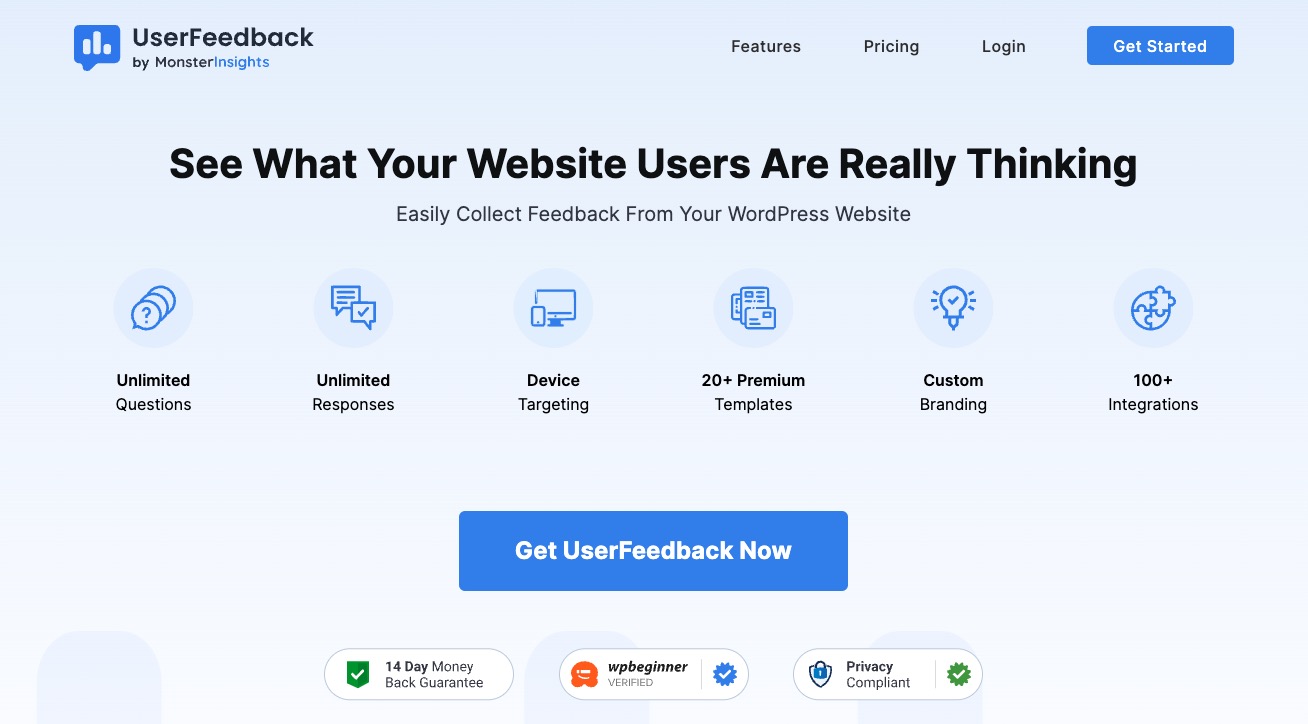
It’s the best WordPress survey plugin that’s specifically designed to collect customer feedback. It’s incredibly easy to use and comes with a variety of powerful features, such as advanced targeting, various question types, conditional logic, and pre-made templates.
You can even get started for free or check out the licenses.
2. Demonstrate Your Values Through Action
Many consumers nowadays care a lot about a company’s values. In fact, 63% of consumers prefer to purchase from companies that reflect their personal values and beliefs. This means that you should show off yours, too!
How to implement this strategy:
- Clearly communicate your company values on your website and marketing materials
- Support causes that align with your brand values
- Ensure your business practices match your stated values
- Share stories about how your company lives its values
For example, if environmental sustainability is one of your values, demonstrate this through eco-friendly packaging, carbon offset programs, or sustainable manufacturing processes.
3. Build Strong Customer Relationships
84% of customers say being treated like a person, not a number, has a big impact on whether or not they decide to buy. This means no generic responses or vague emails.
How to implement this strategy:
- Personalize interactions: Use customer data to tailor communications and recommendations
- Show genuine empathy: Train your team to understand customer perspectives and concerns
- Maintain consistent communication: Keep customers informed through email, social media, and other channels
- Express appreciation: Thank customers through loyalty programs or personalized notes
- Collect and act on feedback: Use surveys and feedback forms to understand customer needs
Customers instantly feel if you’re just trying to take money from them and don’t actually see them as people. If you want to be successful, don’t make this mistake.
4. Maintain Complete Transparency
Transparency builds trust by showing customers you have nothing to hide. A study by Label Insight found that 94% of consumers are likely to be loyal to brands that offer complete transparency. That’s a very large group of people!
How to implement this strategy:
- Be honest about your products, including limitations
- Clearly communicate your pricing without hidden fees
- Share your company’s manufacturing or operational processes
- Be upfront about data collection practices
- Acknowledge mistakes straight away
Transparency means being honest even when it’s uncomfortable. If there’s a product issue or service outage, communicate openly with affected customers rather than hide the problem.
Also, I recommend you check out my guide on making GDPR-compliant Surveys for some more tips.
5. Provide Exceptional Customer Service
58% of consumers will switch companies because of poor customer service. Many people will even swap after just one bad experience. It leaves very little space for making mistakes and proves that your customer service needs to be on point!
How to implement this strategy:
- Offer multiple support channels (phone, email, chat, social media)
- Respond quickly to customer inquiries and complaints
- Train your support team to be empathetic and solution-focused
- Go beyond customer expectations when resolving issues
- Follow up after problem resolution to ensure satisfaction
When customers know you’ll be there for them if issues arise, their confidence in your brand skyrockets. I recommend you check out my guide on How to Improve Customer Service: 12 Practical Tips.
6. Showcase Authentic Customer Reviews and Testimonials
According to BrightLocal, 87% of consumers read online reviews for local businesses in 2020. In fact, customer reviews are a major influencer when it comes to people’s purchase decisions.
How to implement this strategy:
- Collect and display genuine customer reviews on your website
- Share detailed testimonials from satisfied customers
- Include case studies showing how your product or service helped solve real problems
- Use video testimonials for more personal impact
- Don’t filter out all negative reviews—responding professionally to criticism shows authenticity
Customer testimonials serve as social proof, showing potential customers that others have had positive experiences with your brand. Read How to Ask For a Review (12 Best Ways + Examples) to learn more.
7. Protect Your Brand Reputation
Now, let’s look at the last tip. This is another important one because your brand reputation is the sum of how customers perceive your company. This is a crazy fact, but companies with strong reputations outperform others by 2.5 times when it comes to stock market performance.
How to implement this strategy:
- Monitor online mentions of your brand
- Respond promptly to both positive and negative feedback
- Address public complaints quickly and professionally
- Maintain consistent quality across all customer touchpoints
- Train employees to represent your brand values in every interaction
A strong reputation takes time to build but can be damaged quickly. Protecting it requires constant attention and commitment to customer satisfaction.
Best Practices for Building Customer Trust

Now that you have learned how to build trust with customers, let’s explore some other best practices:
- Keep your promises: Never make commitments you can’t fulfill!
- Protect customer data: Implement strong security measures to safeguard personal information
- Be consistent: Deliver the same quality experience across all channels and touchpoints
- Share your expertise: Provide valuable content that helps customers solve problems
- Ask for feedback: Show customers you value their opinions by acting on their input
How to Rebuild Trust After a Mistake
Even the most customer-focused companies make mistakes, and, inevitably, you will, too. When trust is damaged, here’s how to rebuild it:
- Acknowledge the issue quickly and completely
- Take responsibility without making excuses
- Apologize sincerely to affected customers
- Make it right by offering appropriate compensation or solutions
- Implement changes to prevent similar problems in the future
- Communicate these changes to show you’ve learned from the experience
Don’t be too affected if mistakes happen. Some of these interactions will be your perfect opportunity for changing things around. I’ve seen negative feedback and mistakes turn customers into loyal advocates. It all comes down to how well you handle it!
How to Measure Customer Trust
Now, after all this information about building trust, you might be thinking: “That’s great and all, but how do I measure this?” Here are some of my favorite ways:
1. Measure Customer Trust With Net Promoter Score (NPS)
The Net Promoter Score is one of the most powerful indicators of customer trust and loyalty. This metric asks customers a simple question: “On a scale of 0-10, how likely are you to recommend our company to a friend or colleague?”
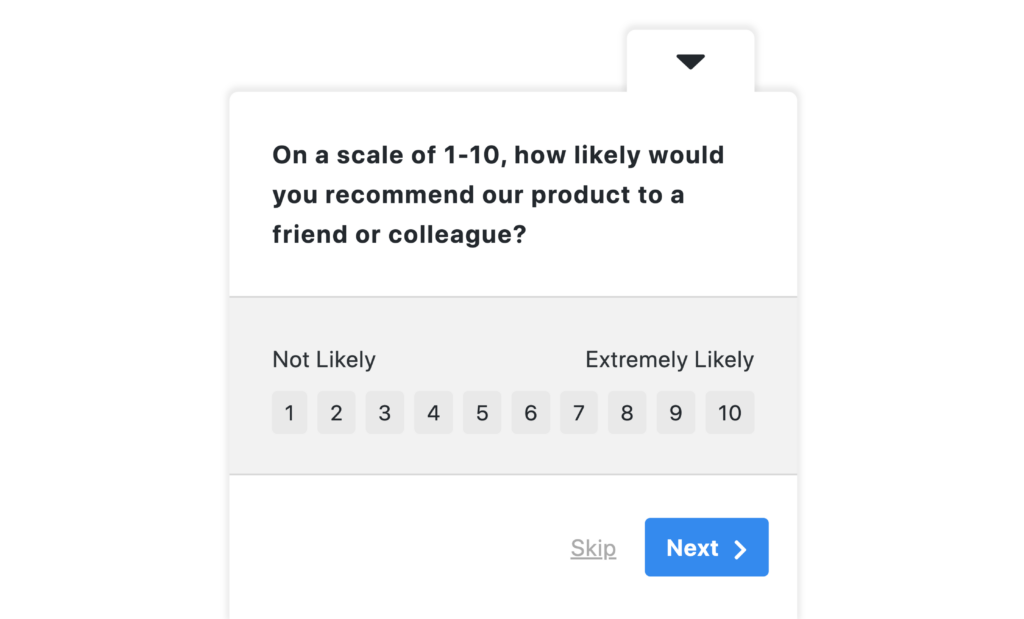
UserFeedback brings an NPS survey template and offers the NPS survey report. With this report, you can automatically track and calculate your NPS score right inside WordPress:
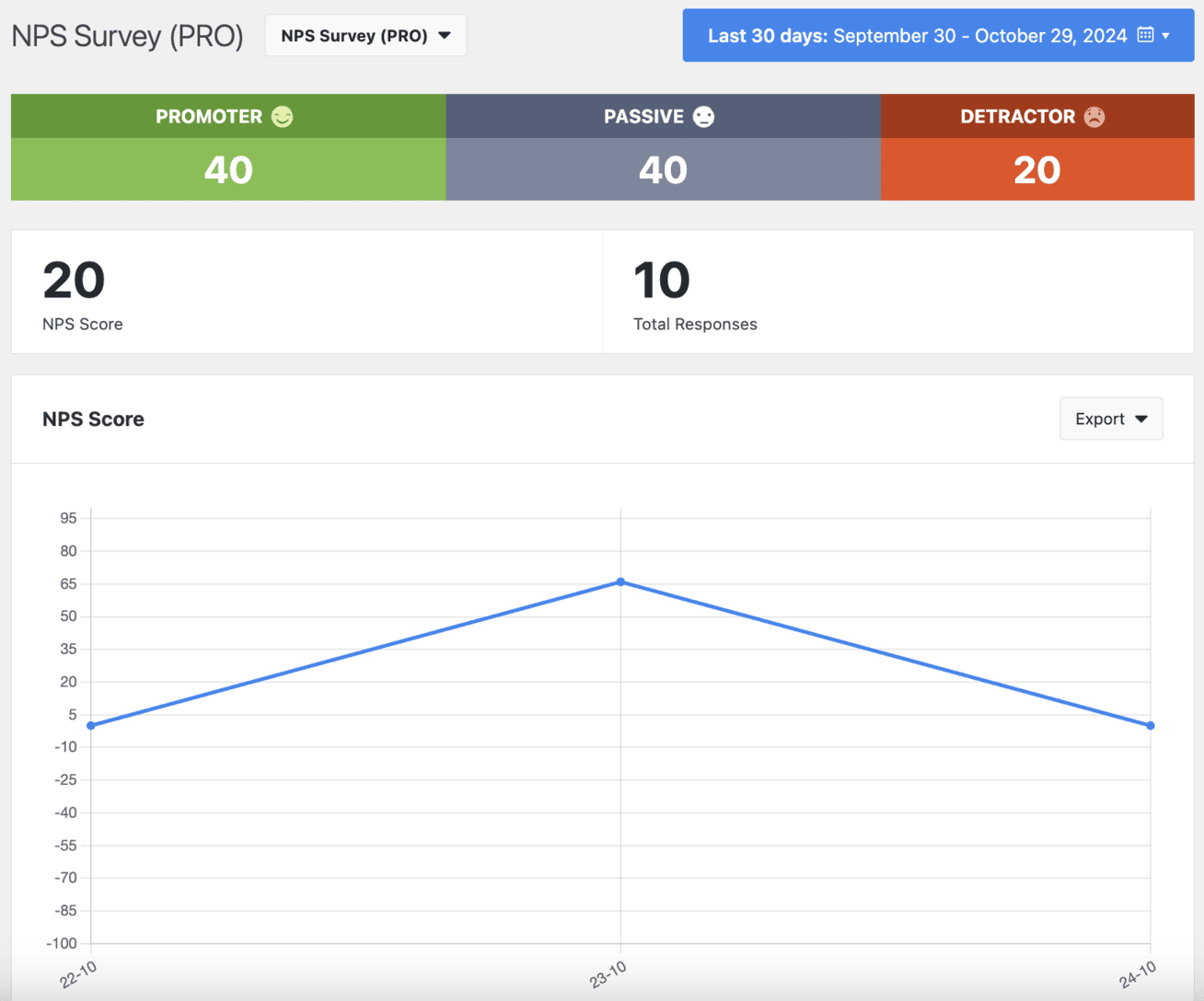
Read this Tutorial: Net Promoter Score® (NPS®) Survey in WordPress.
2. Analyze Your Customer Retention Rate
Your retention rate directly reflects the trust your customers have in your brand. When trust is high, customers stay loyal and your retention rate improves.
How to calculate and leverage retention data:
Calculate retention rate: (Number of customers at end of period – New customers acquired during period) ÷ Number of customers at start of period × 100
- Break down retention by customer segments to identify where trust is strongest
- Compare retention rates before and after implementing trust-building initiatives
- Identify patterns among customers who leave to spot potential trust issues
Customer retention doesn’t just happen—it’s earned through consistent delivery on promises and exceptional experiences that build trust with every interaction.
3. Use Customer Satisfaction Score (CSAT) Surveys
CSAT surveys provide immediate feedback on specific interactions, showing you exactly where trust is being built or broken.
They are designed to ask customers to rate their satisfaction immediately after key touchpoints:
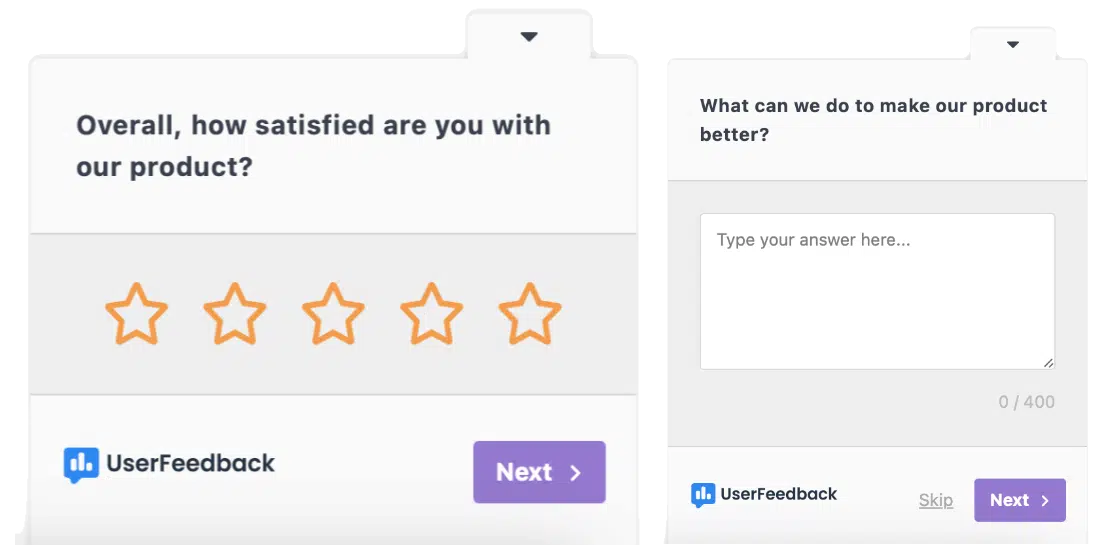
Remember: High satisfaction with individual interactions builds into overall trust over time. A customer who consistently rates experiences positively is developing trust in your reliability.
4. Implement a Trust Barometer
Unlike generic feedback tools, a Trust Barometer specifically measures how much customers trust your company across multiple dimensions.
How to create an effective Trust Barometer:
- Develop questions that directly address trust components like reliability, competence, transparency, and values alignment
- Ask customers to rate statements like “This company always delivers on its promises” or “I believe this company acts in my best interest.”
- Conduct these surveys quarterly or bi-annually to track long-term trust trends
- Compare results against industry benchmarks when available
- Use insights to prioritize trust-building initiatives in areas where you can improve
The beauty of a dedicated Trust Barometer is its ability to pinpoint exactly which aspects of trust need strengthening, allowing for targeted improvements.
5. Look into Your Repeat Purchase Rate
Few metrics demonstrate trust as clearly as customers voting with their wallets again and again.
How to analyze repeat purchase behavior:
Calculate repeat purchase rate: Number of returning customers ÷ Total number of customers
- Measure the average time between purchases to identify trust-building opportunities
- Analyze which products or services have the highest repeat purchase rates
- Compare repeat purchase behavior before and after customer service interactions
- Identify your “trust tipping point”—how many purchases typically convert a one-time buyer into a loyal customer
A rising repeat purchase rate is one of the strongest indicators that customers trust your brand enough to come back rather than trying competitors.
FAQ About Building Customer Trust
How long does it take to build customer trust?
Building trust is an ongoing process, not a one-time event. Initial trust can be established in early interactions, but deep trust typically develops over multiple positive experiences. For most businesses, meaningful trust develops over 3-6 months of consistent positive interactions.
What’s the biggest barrier to customer trust?
Inconsistency is often the biggest barrier to trust. This includes inconsistent quality, messaging, or customer service experiences. When customers don’t know what to expect from your brand, it’s difficult for them to develop trust.
How important is price transparency for building trust?
Very important. Transparency on pricing is crucial for gaining their trust, and hidden fees or unexpected price increases quickly break customer confidence.
Can social media help build customer trust?
Yes, when used effectively. Social media allows for direct, authentic communication with customers. Responding quickly to comments and messages, sharing behind-the-scenes content, and addressing concerns publicly can all help build trust through social platforms.
How does employee satisfaction affect customer trust?
Employee satisfaction directly impacts customer trust. Happy employees deliver better customer experiences. According to Gallup, business units with engaged employees see 10% higher customer metrics.
That wraps up this guide on how to build trust with customers. I hope you learned a ton and found if useful. I’d recommend you also check out How to Perform Customer Loyalty Analysis.
Haven’t tried UserFeedback yet? Get started now!
And don’t forget to follow us on X and Facebook for more about creating surveys and collecting user feedback online.
